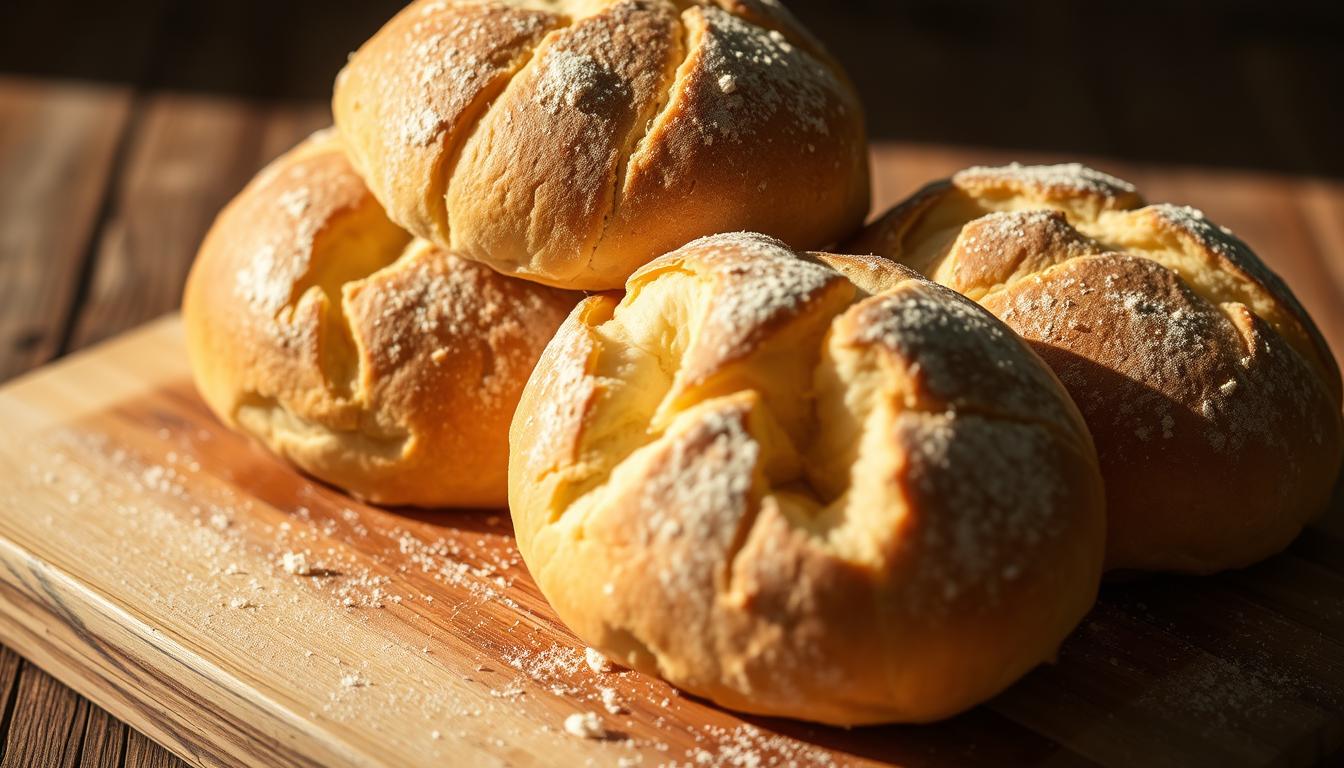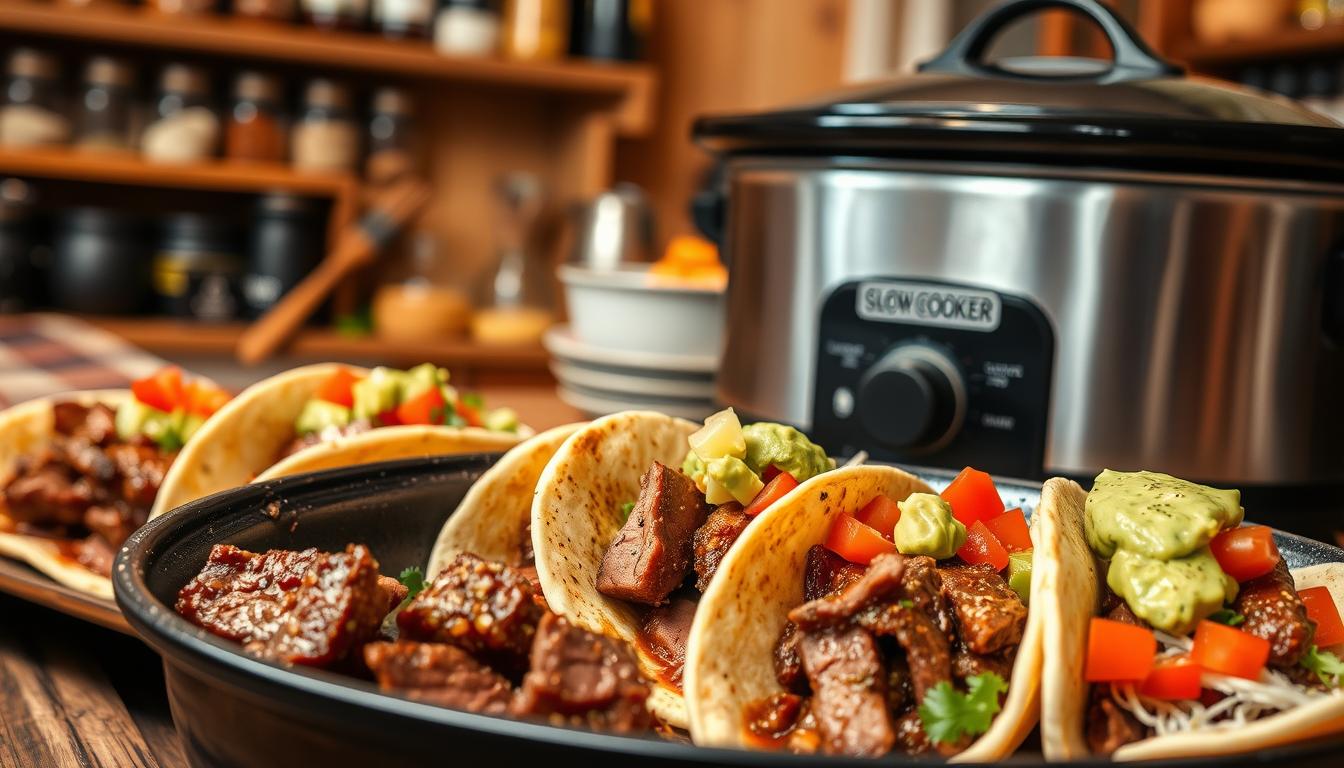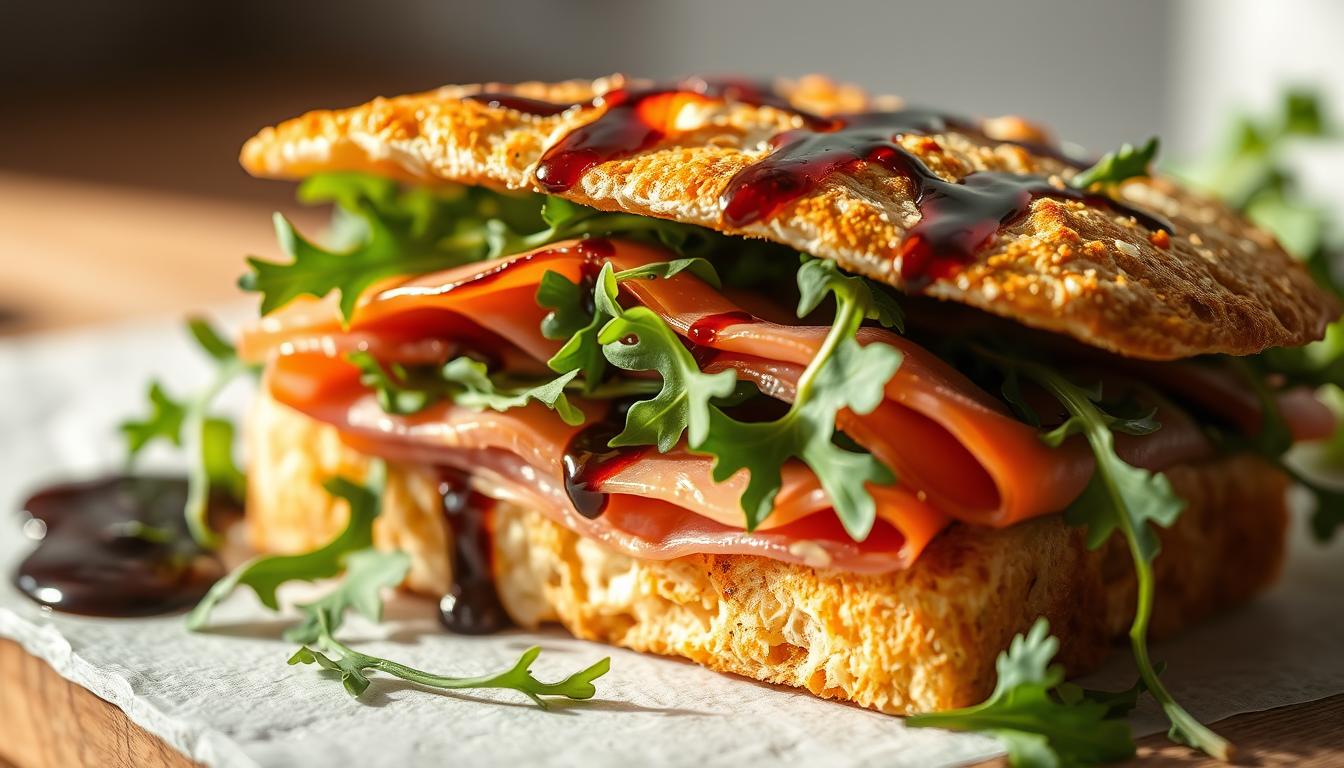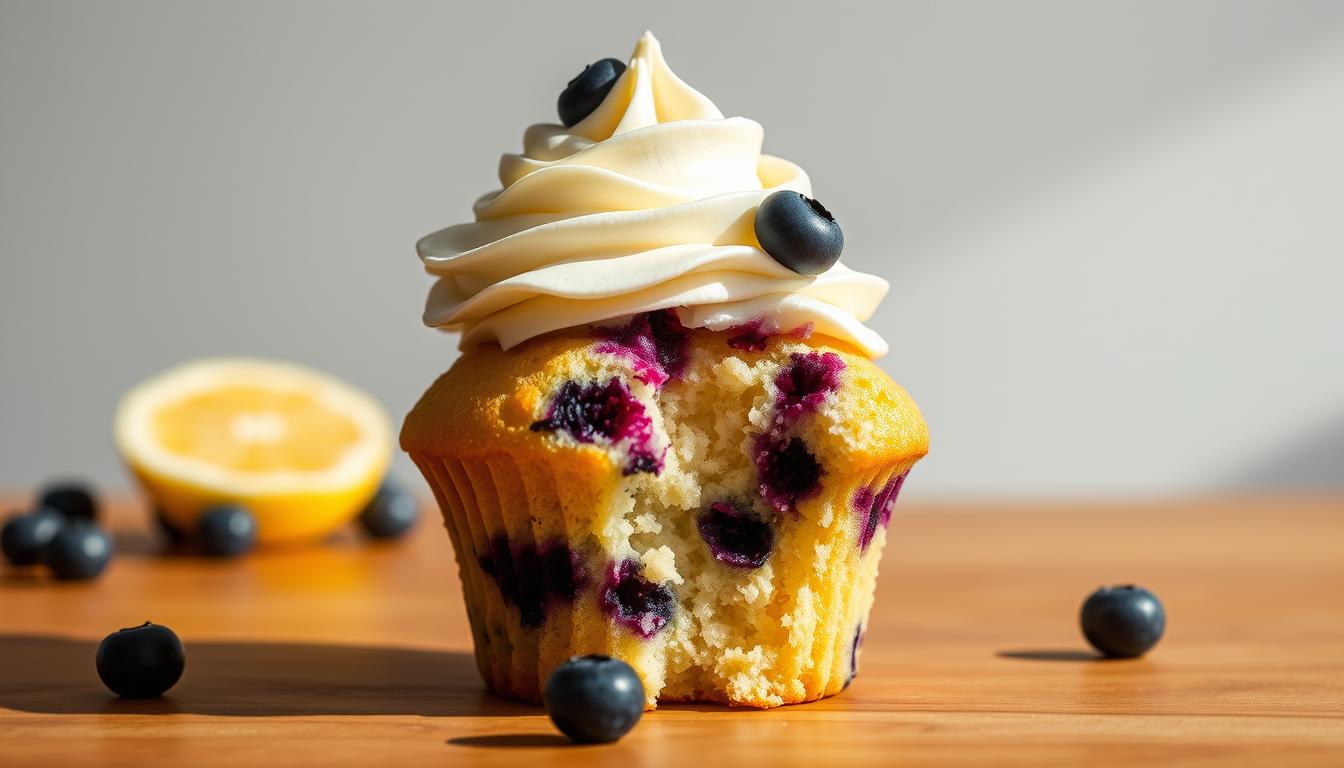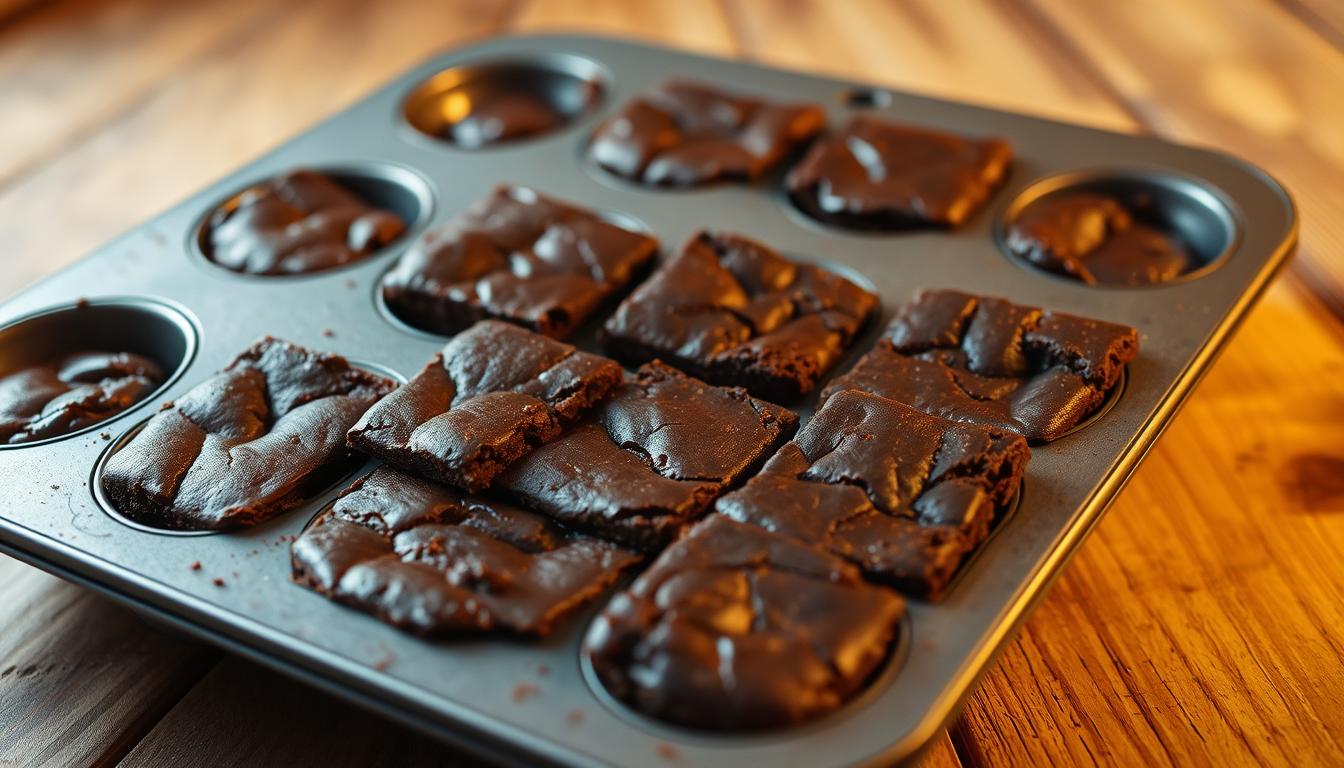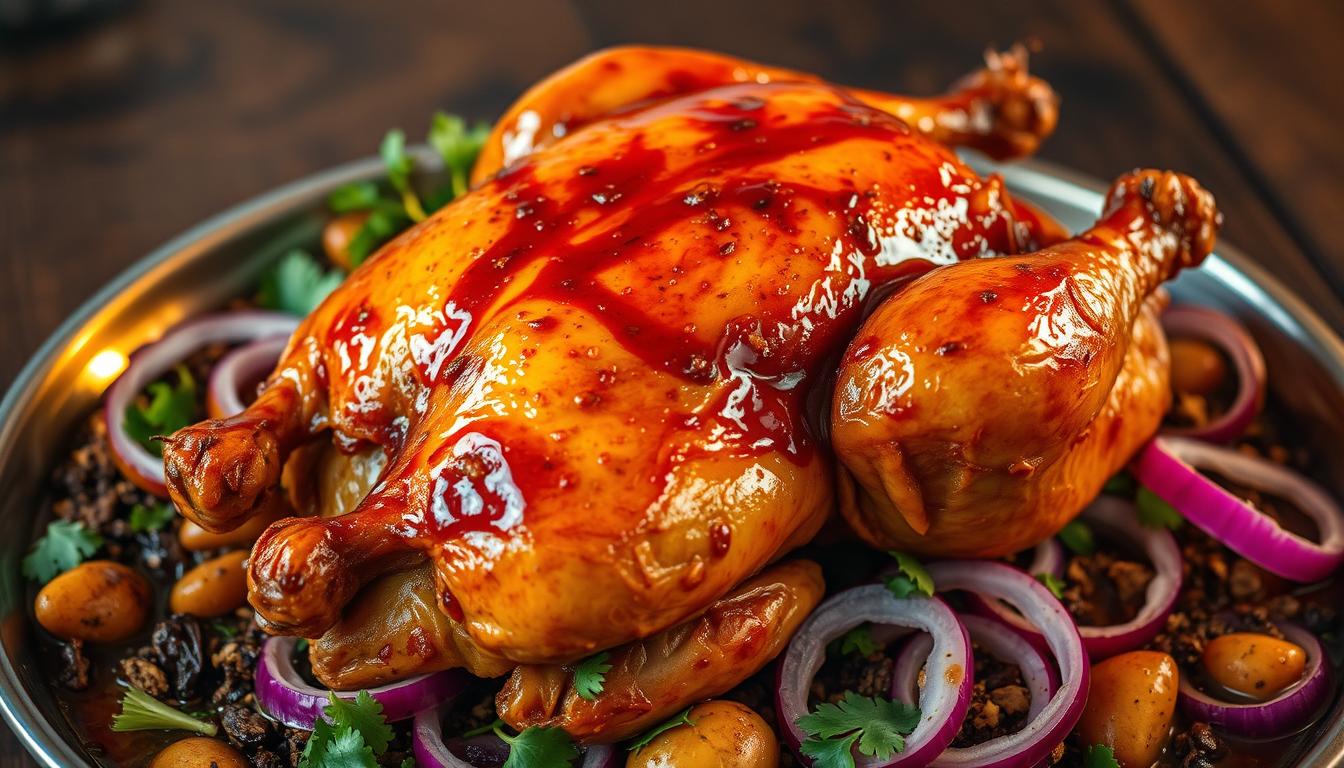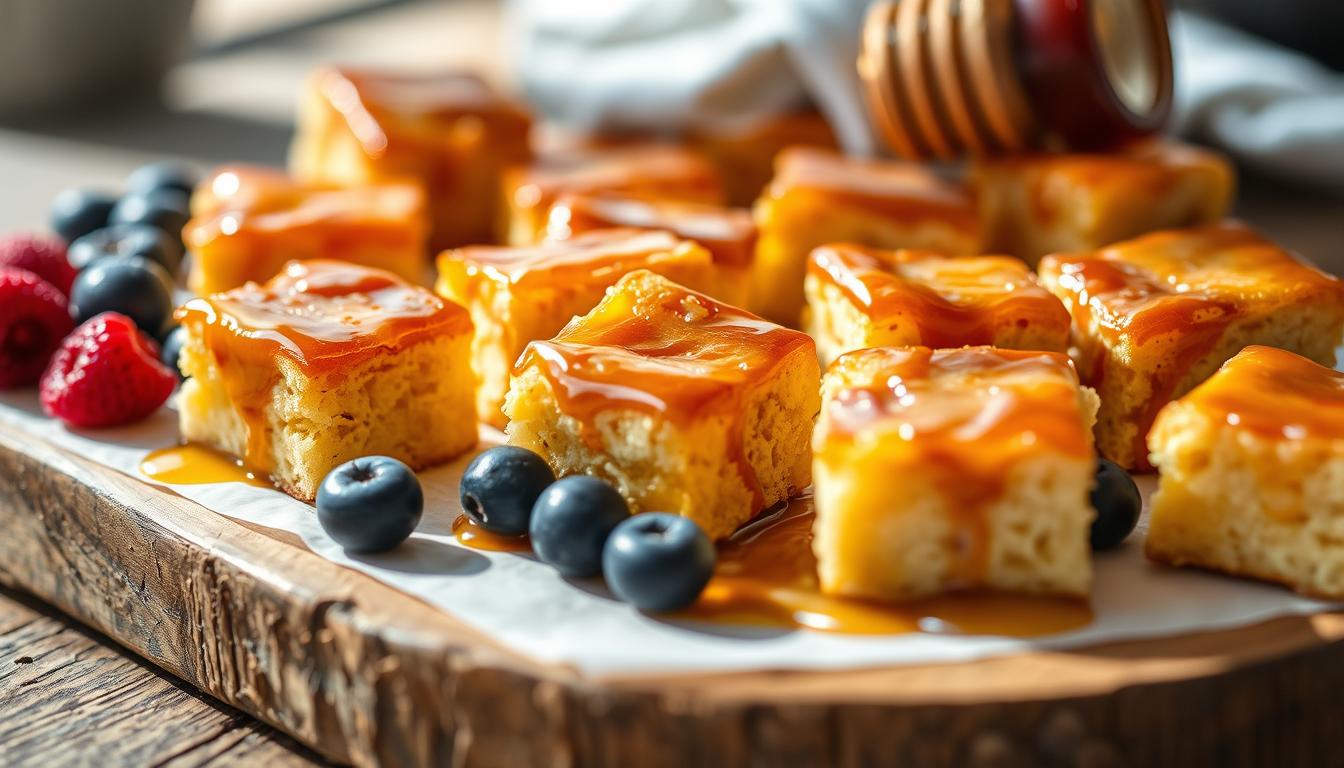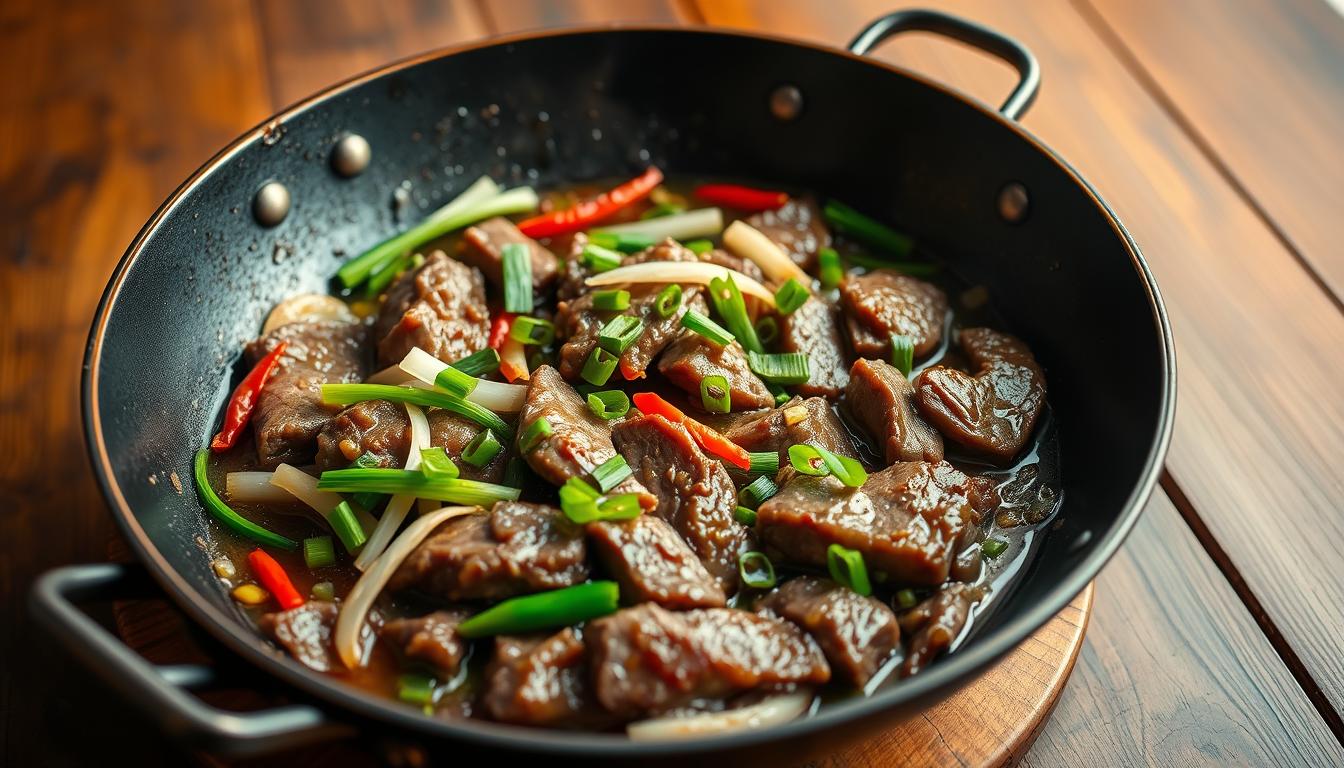Explore the world of homemade sourdough buns, a true culinary art. It turns simple ingredients into amazing bread. These buns are more than a side dish; they celebrate traditional baking.
Making sourdough buns at home is more than baking. It connects you to generations of bakers. It’s rewarding for both seasoned bakers and curious beginners.
These buns can make any meal special, from breakfast to dinner. They have a crisp outside and a soft, tangy inside. This unique taste beats store-bought breads.
Key Takeaways
- Sourdough buns offer superior flavor and texture
- Homemade baking connects you with traditional cooking methods
- Perfect for multiple meal occasions
- Requires basic ingredients and patience
- Healthier alternative to commercial bread
What Are Sourdough Buns?
Sourdough bread rolls are a special type of baking that turns simple ingredients into tasty, tangy treats. They are made differently than regular bread because of a natural fermentation process. This process gives them a unique flavor and texture.
These artisanal bread rolls are different from regular bread because of their complex taste and special making process. Sourdough baking uses a unique fermentation method that makes it stand out from other bread-making ways.
A Brief History of Sourdough
The history of sourdough bread rolls goes back thousands of years. The ancient Egyptians were among the first to use wild yeast fermentation. They developed early techniques that spread across many cultures. Archaeological finds show sourdough baking started at least 1500 BCE.
- Ancient Egyptians first documented sourdough techniques
- Wild yeast fermentation became a staple of early bread production
- Pioneers and settlers brought sourdough methods to new regions
Common Ingredients Used
To make amazing sourdough bread rolls, you need a few key ingredients. These ingredients work together to create something truly special.
| Ingredient | Purpose | Significance |
|---|---|---|
| Flour | Base of the dough | Provides structure and nutrition |
| Water | Hydration | Activates fermentation process |
| Sourdough Starter | Leavening agent | Creates unique flavor and texture |
| Salt | Flavor enhancement | Controls fermentation and adds taste |
Your sourdough bread rolls will have a rich, complex flavor after fermentation. Each ingredient is important for making the perfect batch of artisanal rolls. They capture the true spirit of traditional sourdough baking.
Why Choose Sourdough Buns?
Artisan sourdough buns offer a unique culinary experience. They go beyond ordinary bread rolls. When you try a sourdough bun recipe, you’ll find a world of flavor, nutrition, and tradition.
Incredible Health Benefits
Sourdough buns are great for health-conscious food lovers. The fermentation process brings many nutritional benefits:
- Improved digestibility compared to traditional bread
- Lower glycemic index for stable blood sugar
- Enhanced nutrient absorption
- Reduced gluten sensitivity
Flavor Profile Comparison
The taste of artisan sourdough buns is complex and tangy. Unlike standard bread rolls, these buns have a rich, nuanced flavor. This flavor elevates any meal.
| Characteristic | Sourdough Buns | Regular Bread Rolls |
|---|---|---|
| Flavor Complexity | Deep, tangy, multilayered | Bland, uniform |
| Texture | Chewy, hearty | Soft, uniform |
| Digestibility | Easier to digest | Standard digestion |
By choosing a homemade sourdough bun recipe, you’re not just baking bread. You’re crafting a culinary experience that nourishes both body and palate.
Essential Tools for Making Sourdough Buns
Successful sourdough baking needs the right tools to turn your kitchen into a pro bakery. Whether you’re new or experienced, the right tools make baking sourdough buns easier and more fun.
Baking Equipment Needed
To begin your sourdough baking, you’ll need some key tools for perfect buns. Here are the must-haves for your sourdough starters and baking:
- Large mixing bowls (ceramic or stainless steel)
- Digital kitchen scale for precise measurements
- Measuring cups and spoons
- Bench scraper or dough knife
- Baking sheets or stone
- Parchment paper
- Oven mitts
Optional Tools for Convenience
While not essential, these extra tools can improve your sourdough baking. They help you get professional-quality results:
- Proofing basket (banneton) for shaping and rising dough
- Bread lame or sharp razor for scoring
- Dutch oven for creating steam and perfect crust
- Thermometer for monitoring dough and starter temperatures
- Airtight container for storing sourdough starter
Quality tools make sourdough baking more precise and fun. Remember, practice and patience are crucial to mastering sourdough baking.
Key Ingredients for Amazing Sourdough Buns
Making delicious homemade sourdough buns starts with knowing the key ingredients. These ingredients turn simple dough into amazing bread. Success comes from choosing the right parts and understanding how they work together.
To make great sourdough buns, pick your ingredients carefully. Flour and sourdough starters are the most important. They combine to make your baking magic happen.
Selecting the Perfect Flour
Flour is the base of your sourdough buns. Not all flours are the same. Your choice affects taste and texture a lot.
- Bread flour: High protein content (12-14%) creates chewier buns
- All-purpose flour: Versatile option with moderate protein levels
- Whole wheat flour: Adds nutty flavor and extra nutrients
Nurturing Your Sourdough Starter
A strong sourdough starter is key to your baking journey. It shapes the taste and how well your buns rise.
| Starter Characteristic | Ideal Qualities |
|---|---|
| Consistency | Thick, yogurt-like texture |
| Smell | Pleasantly tangy, not rancid |
| Bubbling Activity | Vigorous and consistent |
Keep your sourdough starters alive by feeding them regularly. A healthy starter means your buns will always rise well and taste great.
Step-by-Step Guide to Making Sourdough Buns
Making perfect sourdough buns needs patience, precision, and knowing how to bake with sourdough. This guide will show you how to make tasty homemade sourdough buns. They will surely impress your family and friends.
Preparing Your Sourdough Starter
Your sourdough starter is key to your baking journey. Start by making sure your starter is active and bubbly. A good starter will double in size in 4-8 hours after feeding.
- Use room temperature filtered water
- Maintain a consistent feeding schedule
- Keep starter at 70-75°F for optimal growth
Mixing and Kneading the Dough
Mixing and kneading are vital for your dough’s gluten structure. Mix ingredients slowly to get a smooth, elastic dough.
- Mix flour, water, and starter
- Let the mixture rest for 30 minutes
- Add salt and knead until smooth
Shaping the Buns
Shaping is what makes your buns look and feel great. Try to make them all the same size and shape for even baking.
| Shaping Technique | Key Characteristics |
|---|---|
| Tension Rolling | Creates smooth surface, tight skin |
| Folding Method | Develops internal structure |
| Bench Rest | Allows gluten to relax between shaping |
With practice, you’ll get better at sourdough baking. Soon, you’ll make buns that look and taste like they came from a bakery.
Fermentation and Proofing Process
Mastering the fermentation and proofing process is key to making delicious sourdough buns. These stages turn simple ingredients into tasty, light, and airy sourdough bread rolls. They will impress even the most picky bread lovers.
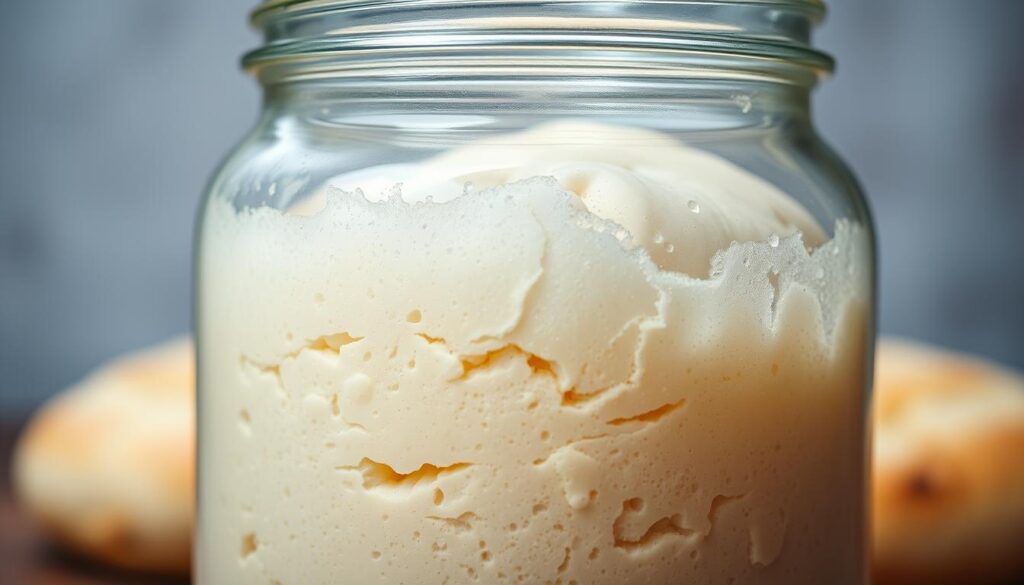
Fermentation is the magic that makes sourdough special. During this time, natural yeasts and bacteria create complex flavors and make the bread easier to digest.
Understanding Bulk Fermentation
Bulk fermentation is a vital step in making top-notch sourdough buns. It’s when your dough gets stronger, tastier, and more structured through slow fermentation.
- Temperature is key in fermentation speed
- Warmer places speed up fermentation
- Cooler places slow it down
- The best temperature for fermentation is 70-75°F
Tips for Perfect Proofing
Proofing is the last rise that gives your sourdough bread rolls their perfect texture and volume. Getting this right is crucial for your artisan sourdough buns.
- Look for signs of fermentation
- Use the poke test to see if the dough is ready
- Keep the room temperature steady
- Avoid drafty spots during proofing
When proofing, remember to consider humidity, room temperature, and your sourdough starter’s strength. Patience is your best friend in making sourdough bread rolls that will wow your taste buds.
Baking Your Sourdough Buns
The moment of truth in sourdough baking is when you turn your dough into delicious buns. It takes precision, patience, and a few key techniques to make your buns stand out.
Getting your sourdough buns right means knowing your oven and using smart baking methods. Professional bakers know that temperature and moisture are key to great results.
Optimal Oven Settings for Sourdough Buns
To make perfect sourdough buns, get your oven ready:
- Preheat the oven to 450°F (232°C)
- Use a baking stone or heavy-duty baking sheet
- Create steam by placing a cast-iron skillet with water on the bottom rack
Crafting the Perfect Crust
To get a crisp, golden crust on your buns, follow these steps:
- Spray water on buns before baking
- Bake for 20-25 minutes until golden
- Let buns cool on a wire rack to stay crisp
Professional sourdough baking is all about heat and moisture. The right technique turns simple ingredients into artisan-quality buns that will wow bread lovers.
Creative Variations for Sourdough Buns
Try new flavors and unique sourdough bun variations to elevate your experience. Turning a simple sourdough bun into a masterpiece is easier than you think!

Aromatic Herbs and Spices
Adding herbs and spices to your sourdough buns can make a big difference. Here are some tasty options:
- Rosemary and sea salt
- Thyme and black pepper
- Garlic and parmesan
- Oregano and chili flakes
Cheese and Filling Innovations
Make your sourdough buns gourmet by adding creative fillings. Try these amazing combinations:
| Filling Type | Flavor Profile | Best Paired With |
|---|---|---|
| Cheddar and jalapeño | Spicy and sharp | Chili or barbecue dishes |
| Feta and spinach | Mediterranean-inspired | Salads and light proteins |
| Caramelized onion and gruyère | Rich and complex | Soups and stews |
When trying new sourdough bun variations, keep the starter’s flavor in mind. Subtle additions can enhance your buns without overpowering their tanginess.
Storage Tips for Sourdough Buns
Keeping your homemade sourdough buns fresh is important. The right storage can keep them tasty and soft for longer. Here’s how to do it right.
Keeping Your Sourdough Buns Fresh
Give your sourdough buns the care they need to stay fresh. Here are the top ways to keep them fresh:
- Cool completely before storing to prevent moisture buildup
- Use a bread box with good air circulation
- Wrap in a clean cotton cloth or paper bag
- Store at room temperature for up to 2-3 days
Freezing and Reheating Techniques
Freezing is great for keeping your sourdough buns longer. Here’s how to freeze them right:
| Storage Method | Duration | Recommended Approach |
|---|---|---|
| Countertop Storage | 2-3 days | Wrap in cloth, store in bread box |
| Refrigerator | 5-7 days | Use airtight container |
| Freezer | Up to 3 months | Wrap individually in freezer paper |
To reheat frozen buns, thaw at room temperature for 1-2 hours. For a crispy crust, warm in a 350°F oven for 5-7 minutes.
Pro Tips for Optimal Freshness
For the best taste and texture of your sourdough buns:
- Avoid plastic bags, which can make crusts soggy
- Cut only the amount you plan to eat
- Reheat only once to preserve texture
Remember, proper storage is key to enjoying your delicious sourdough bread rolls at their peak flavor and texture.
Troubleshooting Common Problems
When you’re making sourdough buns, you might hit some bumps along the way. Dense or heavy buns can be a real challenge, even for seasoned bakers. But knowing what causes these issues can help you get better.
Weak gluten, not enough water, or wrong proofing times can lead to problems. These issues can make your sourdough starters and buns less than perfect.
Temperature is key to making great sourdough buns. Your kitchen’s temperature affects how well the dough rises. If your buns are always heavy, check your proofing area.
Keep it warm, between 70-80°F, for the best results. Cold temperatures slow down fermentation and affect the dough’s structure.
Sourdough starters need regular care to thrive. If your starter is weak or inactive, your buns will likely be flat and tasteless. Make sure your starter is bubbly and has a tangy smell before using it.
Starters that are slow or smell bad need to be refreshed. This keeps them healthy and ready for baking.
Getting good at sourdough bun baking takes practice. Each batch teaches you something new. Keep notes, be patient, and enjoy the journey.
FAQ
What is a sourdough starter and why is it important for making sourdough buns?
A sourdough starter is a mix of flour and water with wild yeast and bacteria. It’s key for sourdough buns because it leavens naturally. It also adds complex flavors and a tangy taste.
How long does it take to make sourdough buns from start to finish?
Making sourdough buns takes 12-24 hours. This includes starter prep, mixing, fermentation, proofing, and baking. The hands-on time is short, but the fermentation needs careful timing.
Can I make sourdough buns if I’m a beginner baker?
Yes, you can! Sourdough baking takes practice, but anyone can learn. Start with the basics, keep your starter healthy, and don’t worry about early mistakes. Each try will make you better.
What type of flour works best for sourdough buns?
Bread flour is best because it has high protein. This helps the dough develop strong gluten. But, you can also try all-purpose or specialty flours for different tastes and textures.
How do I know when my sourdough buns are properly proofed?
Proofed buns are puffy and light. Use the poke test: press the dough gently. If it springs back slowly, they’re ready. If it springs back fast, they need more time.
How can I store homemade sourdough buns?
Cool buns and store them in an airtight container for 2-3 days. Freeze them for up to 3 months. To keep them fresh, wrap them individually and thaw at room temperature.
What are some common mistakes to avoid when making sourdough buns?
Avoid using an inactive starter and over or under-proofing. Also, don’t neglect gluten development and baking temperatures. Keep your starter fed and follow recipes carefully.
Can I add different ingredients to my sourdough buns?
Yes! Add herbs, cheese, seeds, or nuts for flavor. But, be careful not to add too much. It can mess with the fermentation.
How often should I feed my sourdough starter?
Feed your starter daily if you bake often. If less, keep it in the fridge and feed weekly. Always discard some starter before feeding to keep it healthy.
Why are my sourdough buns dense and heavy?
Dense buns can come from an inactive starter, not enough kneading, or under-proofing. Make sure your starter is active, knead well, and use bread flour for better texture.

